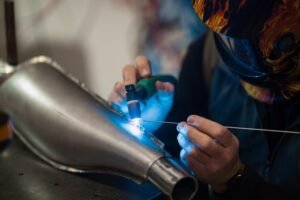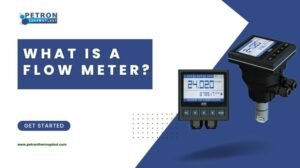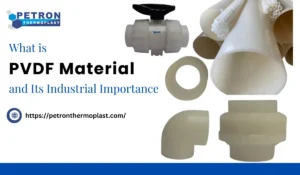Any irrigation system, whether a little lawn sprinkler system or a substantial irrigation system for a golf course, is only as effective as the pipe that delivers the water. In the past, PVC plastic, galvanized steel, or aluminum pipe and tubing were the most common materials used in irrigation systems on commercial and residential buildings. However, many contemporary irrigation systems depend on high-density polyethylene (HDPE) pipes for a good reason. This remarkable plastic is a great option for water transportation through irrigation systems since it offers a variety of unique characteristics.
In any irrigation system, utilize HDPE pipe for the following five reasons.
Long Lifespan
Rapid fluctuations in internal water pressure as the system’s sprinklers switch on and off can also harm irrigation system pipes. The amount of water pressure a pipe can sustain without leaking or splitting might be limited over time due to physical strains caused by abrupt pressure fluctuations. Due to its flexibility, HDPE pipe is more resistant to these stresses than PVC and other typical piping materials. It can also expand and contract in response to variations in pressure without suffering substantial deterioration or distortion. Because of this, HDPE pipe is more durable than most other piping materials and, with proper care, may endure for more than 50 years.
Reduced Leakage
Separate connectors, such as bushings and couplings, which attach to the pipe with built-in threading or sealant tapes, are required to link PVC or aluminum irrigation piping lengths. However, these connectors are prone to leaking, which allows liters of water to leave the system throughout a typical season. HDPE pipe the method of butt-fusion joins HDPE to HDPE Pipe Fittings or other pipes. In this process, the ends of the pipes that will be connected are heated and fused while they are still semi-liquid. The linked pipes are then given time to cool and harden, creating a perfectly impermeable seal.
Thanks to this novel pipe joining procedure, irrigation installers can now construct lengthy, uninterrupted lengths of HDPE piping without having to rely on leak-prone pipe connections. At some places in the system, separate connectors will still be needed, but by cutting back on the number of connectors, the irrigation system will be substantially more leak-resistant.
Higher Freeze Resistance
In the winter, many irrigation systems are susceptible. Any water inside the system’s pipes will freeze and expand when the outside temperature drops below freezing, placing tremendous pressure on the pipe walls. Metal or hard plastic irrigation pipes can deteriorate fast when exposed to freezing water. Due to its inherent flexibility, HDPE is not brittle at below-freezing temperatures and may expand to handle ice-cold water. If any water is still present in an irrigation system when the temperature decreases, it is less likely to sustain catastrophic damage, even if it is strongly urged to drain the system using HDPE pipes.
Superior Flexibility
Compared to most other irrigation pipe materials, HDPE piping is more malleable and can bend at quite sharp angles without harm. As a result, HDPE pipes may be wrapped around heavy objects like rocks or underground utility lines without the need for elbow connections or other fittings.
Environmentally Friendly
Additionally, HDPE pipe is a somewhat eco-friendly solution for irrigation systems. The material is entirely recyclable and may be melted down and reshaped to make new HDPE goods even after extensive use. It also does not release harmful vapors or other substances at high temperatures, in contrast to other forms of plastic.
HDPE Pipe Joining Methods
HDPE pipes can be joined using one of two techniques. HDPE Pipe is connected via butt welding, electrofusion welding, or mechanical fasteners. Compression HDPE Pipe Fittings, flanges, or other appropriate adapters can be used to join pipes composed of materials other than polyethylene. Based on their intended purpose, connection pieces offer convenience. HDPE pipes may now be joined using two techniques:
- Electrofusion (EF) welding
- Butt Welding
Electrofusion Welding
During the electrofusion welding process, welding is carried out using heating resistors inside the fusion fitting. The welding machine’s ends are attached to the Ef fitting’s resistors and heated once the pipes have been placed into the fittings. After that, the HDPE pipe will be attached to the electrofusion fitting. With HDPE pipes that range in diameter from 20 mm to 1200 mm, Pe 100 pipes may be joined together using the electrofusion welding technique. When performing electrofusion welding, the DVS 2207 standard is adhered to.
Butt Welding
The most used welding technique for attaching HDPE pipes and fittings is butt welding. The pipe joining method involves pushing the pipe ends toward one another under pressure as they are heated and fused using buttwelding equipment at a predetermined temperature. HDPE pipes with a diameter of up to 1200 mm can be joined using the welding technique. The butt-welding technique complies with DVS 2207.
Comparison of Electrofusion Welding and Butt Welding
- According to the DVS 2207 standard, there is no difference in quality between the butt welding and electrofusion welding processes performed by licensed welders.
- Use the proper strategy in the right situation to achieve the best output from your task.
- The butt-welding method is preferable to the electrofusion welding method when considering the welding location.
- Electrofusion welding is more favorable when welding on high terrain or in tight spaces where a welding machine cannot fit.
- Getting the welding done based on how convenient it is is more efficient.
- The electrofusion welding technology has more elements affecting weld quality than butt welding (pipe ovality, electrical voltage, continuity, measurement tolerances, etc.). So butt welding is better than electrofusion welding.
- In terms of welding expenses, butt welding is less expensive than electrofusion welding.
- Electrofusion welding is better in terms of the post-welding process.
Summary
These are just a few factors that have irrigation specialists turning more and more to HDPE pipes and tubing. If you have more inquiries about using HDPE pipes and HDPE Pipe Fittings in irrigation systems, contact Petron Thermoplast now!
You may also see – Machined Parts | CNC Machined Components





Pingback: Mpoker
Pingback: useful site
Pingback: สล็อต เครดิตฟรี